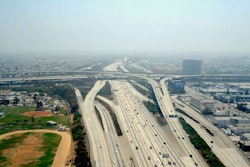Aging infrastructure issues are well-known topics across the political landscape, as President Obama alluded to in his recent State of the Union address. Unfortunately, it takes a tragic incident such as the death of an Ohio construction worker in an overpass collapse to really grab the attention of officials.
As a direct result of the Ohio incident, the New Jersey Department of transportation is in the process of inspecting nearly 300 of what it calls “structurally deficient” bridges throughout the state, according to the New Jersey Record. By the middle of the last week in January, the NJDOT plans to have inspected 40 such bridges.
These inspections already prompted several lanes of a major route over the Hackensack River to be closed just before rush hour on January 21.
In its recent report titled “New Jersey Transportation by the Numbers: Meeting the State’s Need for Safe and Efficient Mobility,” The Road Information Program (TRIP) reveals that 10 percent of the state’s bridges are structurally deficient and have “significant deterioration to the bridge deck, supports, or other major components.”
An additional 26 percent of the bridges don’t meet modern design standards, which includes alignment, clearance, and lane-width issues.
According to TRIP’s report, the conditions of all New Jersey’s bridges and roadways cost the motorists of that state $11.8 billion each year in traffic crashes, congestion delays and operating costs. That comes to roughly $2,000 per driver.
“These conditions are only going to get worse if greater funding is not made available at the local, state and federal levels,” said Will Wilkins, TRIP’s executive director, in a statement regarding the report.









